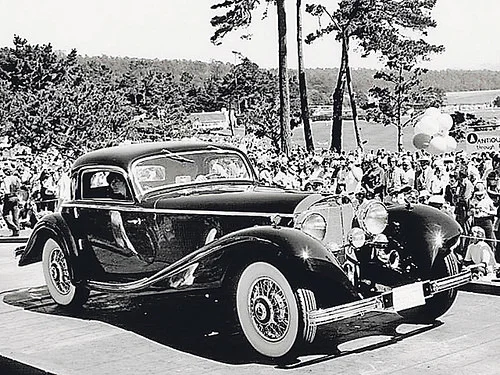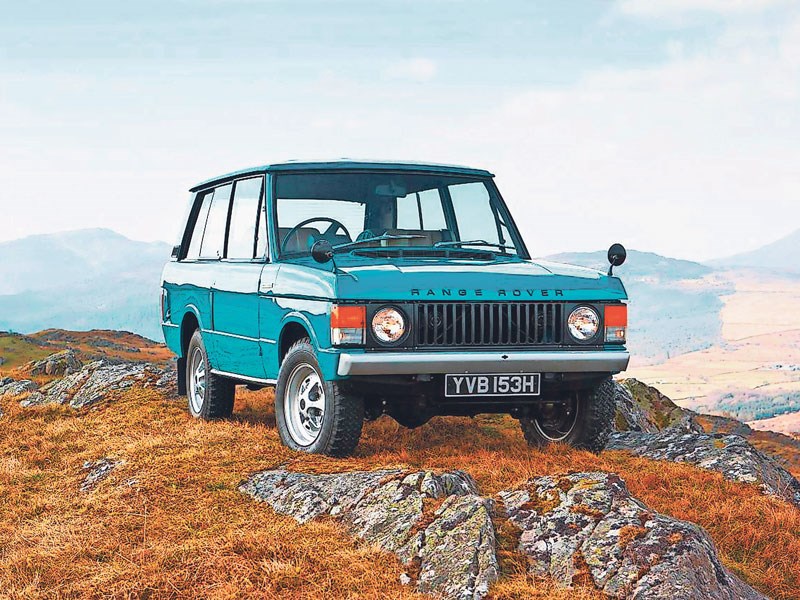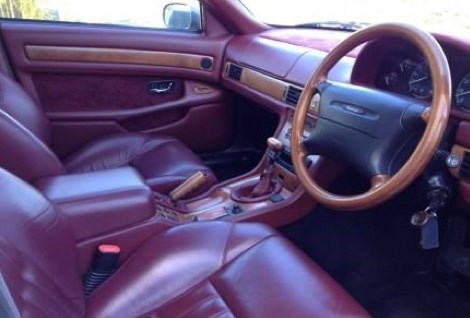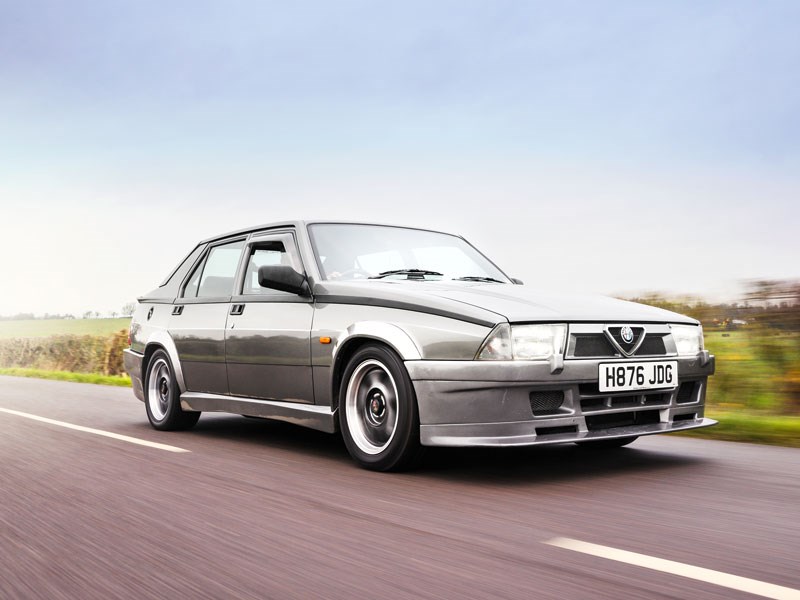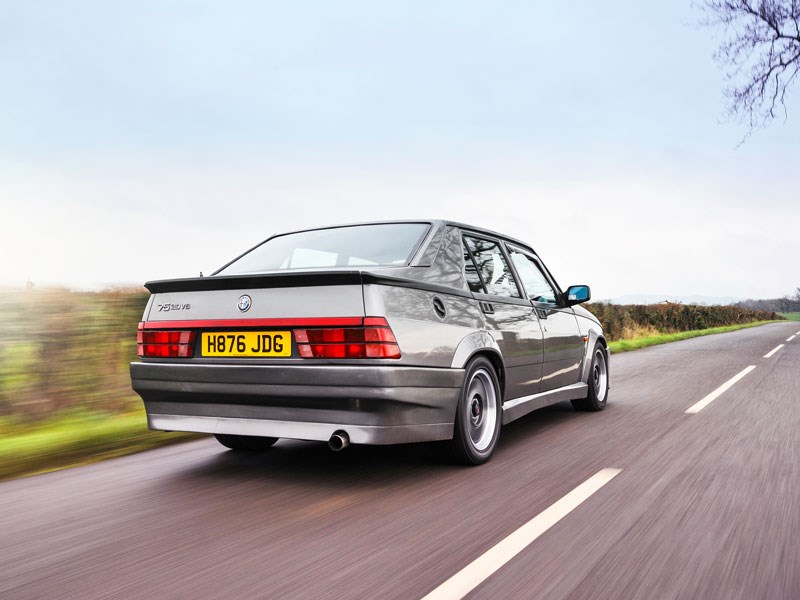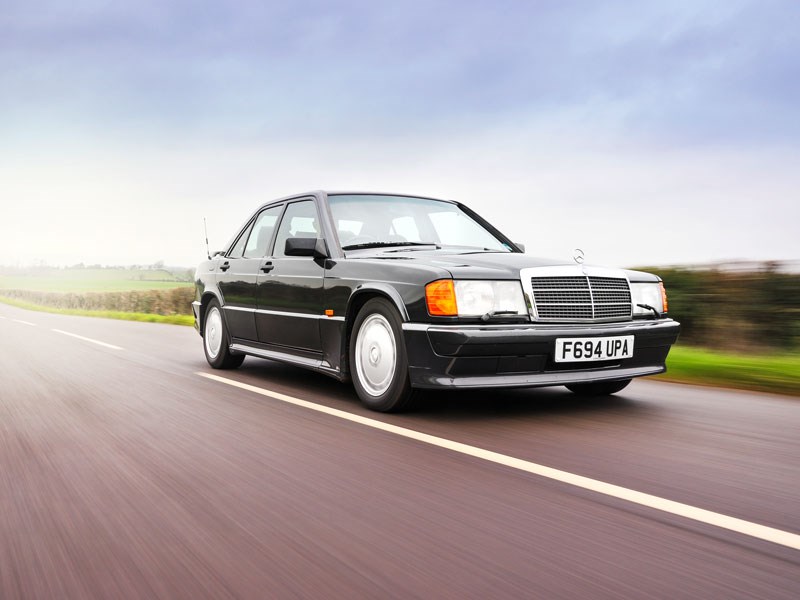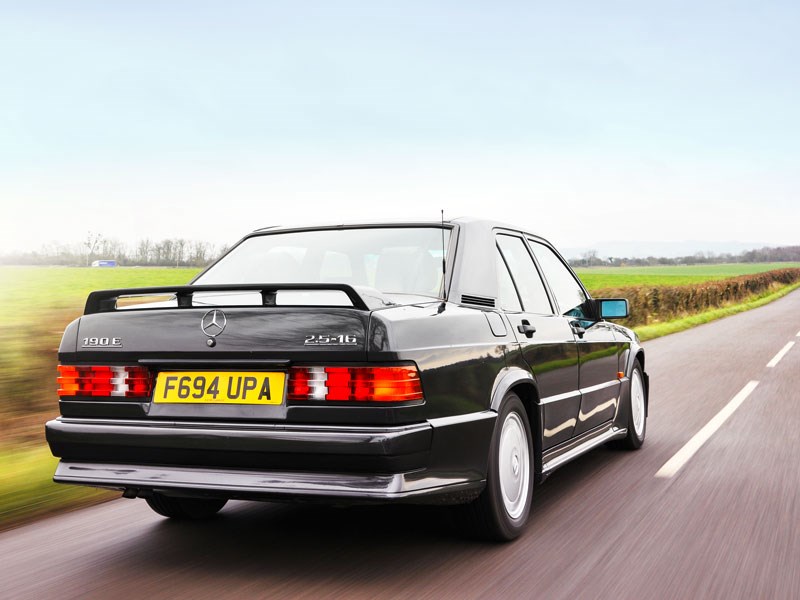The Federation of British Historic Vehicle Clubs wants all classic owners to complete its new survey. So Giles Chapman has hand-picked his greatest British cars you will help protect by filling it in…
The FBHVC needs you! Or, at least, it needs to know everything about your keenness on classic cars, the events you attend, and the opinions you have of these precious vehicles in the wider community.
It wants to research an accurate picture of the classic car world today in this country, and implores all of us to fill in its detailed survey to give it our authentic feedback.
Hence, the National Historic Vehicle Survey 2016. It could be the most valuable 10 minutes you spend this year in shaping the old-car environment of the near-future. Visit www.fbhvc.co.uk/research/survey-2016/ to take part.
An historic vehicle, in the view of the Federation, is one made up to 1986, and that set us thinking: in that context, just what are the most influential cars this country has known? Not just for technical innovation or design panache but in British society, daily life and public consciousness? See if you agree with our 25 British icons – if not, get in touch. We’re looking forward to hearing from you.
1962-66 Ford Cortina MkI
WHY IT MATTERS Britain’s motorway age may have dawned in 1959, but it took Ford to make a car that could stand up to the relentlessness of pounding the tarmac between cities.
With Ford’s careful product planning, and £13m of budget, the Cortina turned out to be just the sort of car family and business motorists craved. In 1963, its first full year, 260,000 were sold, massively beating Ford’s own 100,000 estimate. The final MkI tally in 1966 amounted to 1,013,391, making this the fastest-selling British Ford so far. The reasons for its success were remarkable straightforward. It was slight yet gutsy, using aircraft industry techniques of ‘stress technology’ to get a roomy body that was simultaneously light and strong. And the methodology also made the Cortina very profitable, allowing Ford to forever more be attentive to the subtly changing demands of the British car-buying public. It came to be regarded as utterly conventional, but only after most other cars had changed to mimic the Cortina’s expertly planned success.
1967-73 Rover 3.5-litre P5B
WHY IT MATTERS 1970s British politics might have been turbulent, but the big V8 Rover played its part to keep everybody calm and collected.
Margaret Thatcher arrived in Downing Street in 1979 to begin her 11-year reign that would change Britain forever. But one thing that wouldn’t alter for a few years yet was the mainstay of the Downing Street car pool, the Rover 3.5-litre. They had been obsolete for a full six years but these stately Rovers had performed an understated job of serving Prime Ministers Callaghan, Heath and Wilson before Thatcher on their official business. Pipe-smoker Harold Wilson even had a special, ahem, high-capacity ashtray fitted to one. Nor was Maggie the only influential woman to enjoy the Rover’s well-bolstered comfort and creamy power. Her Majesty the Queen, no less, was a devoted owner.
1970-94 Range Rover
WHY IT MATTERS Arguably, the only truly brilliant car to emerge from the seven-year BLMC era, a proper world-beater.
In 1970, the Range Rover was unique – nothing else combined such unstoppable, go-anywhere ability with near-luxury car comfort. The rugged separate chassis supported permanent four-wheel drive for grip, coil-spring suspension for comfort, and Rover’s aluminium V8 for surging power.
Clothing it was a body of new-suit crispness that, while utterly functional, managed to exude upper-crust style. Today we regard it as a hyper-luxury car for footballers and rappers. Yet at first, it was aimed at the country set with muddy wellies and smelly gun dogs. And in many parts of the country, it still is.
Plush it was not, and it would remain primarily a working vehicle – albeit an extremely classy one – for its first 10 years. No wonder these early ones, used as their designers intended, are now worth a fortune as historically-important classic originals.
1959-67 Ford Anglia
WHY IT MATTERS Here is Ford’s first million-seller in Britain, a fun-to-drive small car that handed UK market domination to the Blue Oval.
Well, the finer points of the 105E Anglia in period are one thing, but for most people alive today it’s inextricably linked to Harry Potter, such is the role the little car has played in JK Rowling’s books and the fantastically successful movie franchise.
Actually, there wasn’t too much wizardry to the car, just sound design and engineering. After long years of asthmatic Ford sidevalve engines, the 105E switched to an eager ohv that seemed to positively like being revved, stirred along with Ford’s first ever four-speed gearbox. A 0-60mph time of 16.5sec was exceptionally swift for an economy saloon. The styling, meanwhile, was crisp and shapely. It was comfier than a Mini, stronger than a Herald, and more dependable than an Imp. In short, a winner
for the British man in the street.
1963-76 Hillman Imp
WHY IT MATTERS A doomed experiment to give Scotland a car industry of its own nevertheless resulted in a fascinating small car.
The Imp would always end up living in the Mini’s shadow, but it was a bold design with lots to commend it, and on-road dynamics guaranteed to raise a smile. The Rootes Group wanted a car that could do 60mph and give 60mpg but ‘Project Apex’ actually evolved based around an all-aluminium, water-cooled, four-cylinder engine mounted at the back like contemporary small Fiats and even BMWs.
The boxy Imp was a surprisingly stable car in corners, and quite feisty to drive with excellent, well balanced steering. Its opening back window heralded the hatchbacks still to come. To build it, the company was forced by the Government to spend £22m on a factory near Glasgow, but myriad problems with car and plant blighted the venture, and the Imp faded away in a sad, slow-motion demise.
1980-90 Austin Metro
WHY IT MATTERS For a small car it had a big responsibility – to carry the carcass of BL into the sun-kissed sales uplands of the 1980s.
Revealed on Friday, 8 October 1980, the slightly weird official title was the Austin mini-Metro, bets hedged on using an old favourite with a new name chosen by British Leyland workers. Most of the rest of the country already knew the car as Project LC8, the little hatchback to hit back at European superminis, and rescue BL.
And they used this crucial task to press the right emotional buttons. It was your patriotic duty to buy one (despite the milkfloat-like steering wheel, rowdy drivetrain and four-speed gearbox), and the TV ads with Metros manning the white cliff at Dover rammed that obligation home. Truth was, it was a good little car, the nation’s fourth best seller in 1981, although the Fiat Uno and Peugeot soon upped the supermini game massively.
1959-00 MINI
WHY IT MATTERS Proven by polls and expert opinions over 60 years, Britain’s world-famous small car is also the most influential, best loved and most recognisable ever.
The Mini’s ingenious concept and execution resulted in a staggering amount of interior space for a 10ft-long car. It was the 24-month design mission of Sir Alec Issigonis: erudite, obstinate and chain-smoking. Conceived as an exterminator of bubble cars, an ultra-compact ‘cube’ for four passengers, it turned into a technology totem, pioneering the combination of transverse engine, front-wheel drive, gearbox-in-sump, and space-saving rubber cone suspension.
It was idiosyncratic, with a shelf instead of a dashboard, nowhere for a radio and door pockets shaped around gin bottles. It also lost money – the £496 price really was too good to be true. But its logical design provided one of the most exciting driving experiences ever, playing its part in collapsing class barriers in the maelstrom of 1960s Britain.
1922-37 Austin Seven
WHY IT MATTERS This is the little car that not only brought motoring to the British masses but was this country’s first, truly attainable secondhand car for most.
After the First World War, the formerly booming Austin Motor Company hit the skids, and founder Herbert Austin decided it was time for something new and different – a real-car-in-miniature whose four cylinders, four wheels and four seats would crush the pathetic cyclecars that populated the truly budget end of the market. To ‘motorise the common man’, he and talented 18-year-old draughtsman Stanley Edge retired to his home, and together designed the Austin Seven on the billiard table. The little car could do 40mph, cost £165, and was a massive hit, transforming the British car market and causing Morris and Ford to change tactics. In a wider context, the Seven taught BMW how to make cars, and Nissan how to copy them…
1966-74 Lotus Europa
WHY IT MATTERS Lotus made a mid-engined baby supercar that you could actually afford.
Originally it was called the Lotus Europe, and it was a rare cross-Channel co-production, with Renault providing the engine and transmission from the R16. With a little company like Lotus left to break such new ground, there were bound to be a few flaws; and the renamed Europa was claustrophobic (the windows didn’t open) and cramped, but the driving experience was as sublime in its way as the Elan, establishing new roadholding standards that would live on for years in the Esprit.
1952-55 Bentley R-type Continental
WHY IT MATTERS In the year that Elizabeth became our monarch, this Bentley was king of the road.
The Continental was the fastest genuine four-seater car on earth. It was also one of the most beautiful cars on sale, mildly influenced by the Cadillac 62 Coupe, scientifically proven in Rolls-Royce’s wind tunnel, and understatedly finessed by company designers with skill and taste. Crewe’s flagship was an owner-driver super-coupé. The refined straight-six engine was tuned, and gearing was altered to suit high-speed cruising. Its alloy bodywork was built by HJ Mulliner in west London, on a special, lowered chassis. If anything, the car was too comfortable, and the demands of fat-cats meant later Continentals lost the sporting edge that made this the most thrilling Bentley since the marque’s 1920s heydays.
1926-38 Daimler Double Six
WHY IT MATTERS These mightily impressive cars were firm favourites with the Windsor household.
Daimler’s sleeve-valve V12 arrived to thrust the staid British marque into the ‘ultimate car’ limelight, and in a short chassis saloon its 150bhp could allow 80mph. Fitted with towering Hooper coachwork, the it rumbled sedately with the King easy to spot sitting regally at the back. There was no mistaking a Daimler from the Royal Mews; it always had a black-painted radiator grille, and, of course, a colossal wheelbase of over 12.5ft. Such patronage kept Daimler in high esteem with the public, but after the Second World War – with the silent V12 a distant memory – the pendulum finally and inexorably swung towards Rolls-Royce.
1936-40 SS Jaguar 100
WHY IT MATTERS These handsome beasts should get the credit for templating the upscale British sports car.
When William Lyons took the wraps off his SS100 range in 1936, there was a collective gasp from the British motor industry. He’d managed to produce a two-door roadster with coachbuilt Bentley levels of sporting elegance for a fraction of the price. It was good looking from any angle on its standard centre-lock wire wheels, and stoking desire in all who clapped eyes on them.
In those days, the engines still came from elsewhere (Standard in this case, the tuned 2.5-litre creating a 100bhp machine), but the way the cars were packaged and finished was a masterclass in doing it right, leading directly to the brilliant MkVII of 50.
1964-65 Aston Martin DB5
WHY IT MATTERS Almost overnight, a handmade GT built for a privileged elite became a getaway car for steely heroes.
The star turn in Goldfinger, James Bond’s third big-screen outing, was a silver Aston Martin DB5 with extras that money couldn’t buy, including a flip-up sunroof for disposing of assassins, and machine guns in the front bumpers. The magic of special effects transformed the rapid yet tweedy luxury coupé into an international must-have. Oh, yes, and there was a hairy-chested chap called Sean involved somewhere, too. Seen coldly, it was astute product placement, but no such vulgar term ever attached itself to the 150mph DB5, which thanks to sharing 007’s hazardous life took on a mystique for style and capability even Ferrari could never equal. Without the sex appeal, Jagger and McCartney, maybe even Prince Charles, would never have chosen the later DB6s.
1975-81 Vauxhall Cavalier MkI
WHY IT MATTERS Here’s the family saloon that changed the way we, and our dads, regarded mainstream cars
The first-generation Cavalier really lit the blue touch paper for Vauxhall. It was the car that made Britain help take Vauxhall seriously. It was an Anglo-German effort combining the Opel Ascona with a Manta front end, to result in a fabulous saloon to beat the Cortina MkIV at its own game. The Cavalier boasted sure-footed handling, and fine motorway cruising ability, all important for sales reps in a hurry. The timing was perfect, and the Cavalier, along with its smaller Chevette sister car, re-established Vauxhall as a serious player, just as BL stumbled in the marketplace. From 1977, it kept the Luton plant buzzing as cars cascaded off the lines there, selling alongside the Ellesmere Port-built Viva HC.
1965-80 Rolls-Royce Silver Shadow
WHY IT MATTERS For the first time, a Roller was aimed at owners who wanted to drive rather than be driven.
In one fell swoop, the flowing lines of the old Silver Cloud were gone. Here was a square-cut, modern Rolls with features like self-levelling suspension and all-round disc brakes. It was even more silent to travel in than its predecessor; faster, more economical, and more of an owner-driver’s car at a time when Rolls-Royce chauffeurs were becoming the exception, not the norm. The Shadow ditched a separate chassis, although aristocratic owners might not have twigged to such modernity while admiring the lustrous paintwork and gleaming chrome. It became a rolling advert for the best of British craftsmanship, the thing Americans think we do best… even though the Shadow had a lot of Detroit in its effortless deportment.
1962-73 Reliant Regal
WHY IT MATTERS Reliant had the big boys in its sights with the three-wheeled thrift of the Regal.
The Regal 3/25 series is the best-selling three-wheeled car of all time in the UK, with some 105,000 examples finding buyers. Of course, legally, it’s not really a car at all, more closely allied to a motorcycle-and-sidecar, and anyone who has ever driven and loved a Mini would rather get the bus than run a Reliant. But it was a clever design, intended to fit into its legal loophole that allowed someone with a bike licence to travel along British roads holding a steering wheel and without a skid lid. The controls were entirely car-like, and the glassfibre monocoque body was vastly better than on previous Regals, with the added advantage that it couldn’t rust. Drive with care (which means slowly), the Regal’s lightweight bag of assets (including a light alloy four-cylinder engine) could regularly deliver 60mpg – almost nothing on four wheels could come close to that.
1981-84 Triumph Acclaim
WHY IT MATTERS This was the very first Japanese car to be built in the UK – very well indeed, too.
The chaos of BL couldn’t have escaped your notice. A Government bail-out had saved it from bankruptcy in 1975 and henceforth the struggle to make it viable was neverending. Company boss Michael Edwardes couldn’t count on the Metro alone to save the business, and in 1979 signed a deal with Honda to get another attractive little car into production fast. That was the Honda Ballade, a Civic with a boot, and by 1981 it was flowing down the production lines at Cowley. A rarity for BL, it was a car built right (with Honda’s help) from day one. The engines and gearboxes were imported but 70% of the Acclaim by value was sourced here, which just qualified it as a British car.
1973-today Caterham Seven
WHY IT MATTERS Epitome of the roadgoing track car, a concept barely changed since 1957 when Colin Chapman invented it.
Lotus founder Colin Chapman astutely realised sports car fanatics yearned for a sophisticated but cheap-to-run dual-role car; something to drive to a race meeting, campaign with vigour, and then head home in afterwards. That was his Mark Seven. By the early 1970s, it was a bit too grass-roots for his upmarket liking, and one of his dealers. Caterham Cars, bought the rights. At the time, it was the best of the kit cars, but Caterham’s careful nurturing has, like a good whisky, enhanced the car into its maturity. No matter what engine has been fitted or how stripped-down the model, the four-wheeled-motorbike agility is always undimmed. Lotus probably never reckoned the Seven would be on enthusiasts’ wishlists four decades later. But it remains the ultimate weekend thrill machine.
1948-58 Land Rover Series I
WHY IT MATTERS The Jeep won the war but our very own Land Rover grabbed hold of the peace, and it was no uphill struggle.
Here was British ingenuity at its level best –
a hybrid tractor-cum-pick-up, with all the off-road ability of the Willys Jeep and built from surplus bits and pieces to get around steel restrictions. Sounds like an unlikely recipe for a world beater? For sure, but the Rover company’s Land Rover was unbelievably capable. Its four-wheel drive system and 50bhp engine provided a healthy 80lb ft of torque at 2000rpm, so it could bound nimbly up and down slippery hills. Not unnaturally, every farmer in the country wanted one, but that was just the start, as Land Rovers proved themselves ultra-capable in tough situations all over the planet.
1980-81 Delorean DMC-12
WHY IT MATTERS Intended to provide employment in Northern Ireland, this gullwinged wonder so nearly succeeded.
At the final reckoning, it was a toss-up for John Z DeLorean whether to site his new car factory in Puerto Rico or Northern Ireland. In the end, with British Government funding, and close proximity to his engineering partner Lotus, the British province won the day. And for a time, all went swimmingly, as a keen-to-learn workforce bolted the stainless panels to the glassfibre structure and installed the Peugeot-Renault-Volvo V6 engines in the back. When things unravelled, though, they did so spectacularly, with frauds and drugs busts all bringing the DeLorean dream to its knees. Many say the venture could have been saved, but Margaret Thatcher would have none of it. Still, a recent surge of interest in the survivors has rewritten the DMC-12 into motoring history as a car of charisma and, indeed, some merit.
1962-73 Austin/Morris 1100
The Mini gets most of the acclaim for drawing on Alec Issigonis’s fevered, lateral-thinking brilliance. But this was actually an even more sophisticated and influential creation. Yes, it was front-drive, transverse-engined, subframe-built and all the rest, but it also featured an interconnected fluid suspension system called Hydrolastic, designed by Issigonis’s equally brainy mate Dr Alex Moulton, which gave a remarkably smooth ride. Under the bonnet sat a 1098cc version of the BMC A-series engine, front disc brakes were standard, and automatic transmission was available. And it was roomy, roomy, roomy. It all sounds mundane today; back in 1962, such a package was almost unheard-of, and for a while all the global big hitters, from Ford and General Motors to Fiat and Renault were at first aghast, and then scrambled to catch up.
1936-today Morgan 4/4
WHY IT MATTERS With the longest-running model name in motoring history, this sports carshows no signs of becoming obsolete.
Morgans have been handmade in Worcestershire since 1909, and the Morgan Motor Company has occupied its Pickersleigh Road, Malvern Link factory since 1919. It’s the car version of The National Trust, really. Furthermore, it’s been producing – at a steady, unhurried pace – Morgan 4/4s since 1936, changed lightly in detail, never in spirit.
The joy of owning these uplifting sports cars comes from wind-in-the-hair, vintage character and enjoyable, well-balanced handling; outright performance was important, but secondary. Ford engines arrived in 1955 and they can still be found under that multi-louvred, hand-beaten bonnet today. The 4/4 has unique post-vintage thoroughbred appeal with a rock-hard ride, flexing body and evergreen looks.
1958-97 Austin/Carbodies FX4 taxi
WHY IT MATTERS It’s Big Ben, Buck House and Bond Street on wheels – more visitors to Britain have known this classic than any other.
The FX4 was in production for such a hugely long time that we began to think it could never be replaced. Cabbies moaned about about costs and reliability, but these distinctive, rugged workhorses were built expressly for the job, and could put on half a million miles while plying for trade. For most of its career, the FX4 in its slowly evolving forms was the only cab on sale – but passengers loved them.
1968-86 Jaguar XJ6
WHY IT MATTERS Britain managed to pull off the impossible with this Jag, conjuring up a better all-round saloon car than the Germans.
This new British world-beater could out-corner Jaguar’s own E-type but had a silkier ride than a Rolls-Royce. Not everything was radical, mind: the XJ6 was a conventional saloon, front-engined, rear-driven, coil-sprung. From day one, buyers jostled to get one, although patchy quality often resulted in an irate return to the dealer. However, after struggling through the 1970s, vastly improved manufacturing standards introduced in the 1980s unexpectedly meant the XJ was still a serious player against the establishment Mercedes-Benz S-class, BMW 7-series, and Cadillac DeVille.
1968-92 Daimler DS420 limousine/hearse
WHY IT MATTERS At weddings, funerals, mayors’ visits and state occasions, these are an ever-present symbol of British dignity.
Designed to replace the regal Vanden Plas Princess, but essentially a stretched, risen, puffed-up and highly polished Jaguar MkX, Daimler limousines are usually black-painted to suit the formality of their many duties. They have long been a fixture of British public life, and remained popular with the Queen Mum throughout the long years of her later life. Wearing cream or white paint, these Daimlers increased the magic of the better class of wedding better than any stretched Granada.
If you’re giving your daughter away, it’s a fitting way to arrive at the handover. Then again, many a painful farewell has involved them too, as a fifth of all DS420s built were adapted into hearses. Known as ‘The Old Lady’ among chauffeurs, the biggest fleet of 22 was once the pride of Hong Kong’s Regent Hotel. And yet it cost a tenth of the price of a Rolls-Royce Phantom.


































